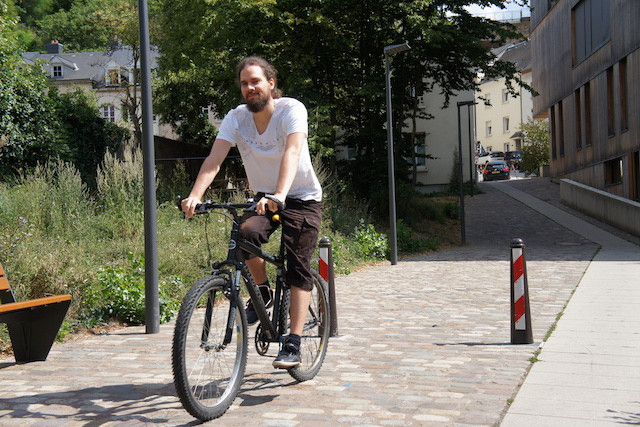“Of course, cyclists are not all saints. There are cyclists who commit traffic violations,” Philippe Herkrath of national cycling advocacy group Lëtzebuerger Vëlos-Initiativ admits, but they are the minority.
So, why has cycling become such an emotionally divisive topic? On social media, the pro-cyclists point out the flaws of motorists, gaps in the cycling infrastructure and obstacles that can be fixed. They are assertive, sometimes angry. If you didn’t know some of the people posting, you might be a little afraid.
“I think it’s true that the cycling community is quite outspoken and assertive in this regard,” says Herkrath. “Mostly because I think in these situations, which are different for car drivers who experience minor inconveniences, cyclists are often put into situations where they feel their life is endangered.”
This is something that a motorist who has never ridden a bike in traffic struggles to relate to--making it harder to bring the two sides closer. Herkrath is not convinced that we’ll ever resolve this tension. And he says it is not just an issue for countries where cycling developed relatively recently. Even in bike-nation Denmark, a country with 12,000 kilometres of cycle routes and police on bikes, cyclists have a bad reputation among car drivers.
“I don’t think it’s necessarily an issue coming from modes of transport,” Herkrath suggests. “I think it’s more a side issue of our society, that there’s more stress on people and less and less willingness to show tolerance to people who live or behave differently.”
If he is not convinced that there will ever be harmony between the two types of road users, he points out it will be easier to live with this gap in a country like Luxembourg if there are more bike users. Herkrath cites a 2009 report that found nationally cyclists made up 2% of all road users. A lot has happened in Luxembourg since then and today the proportion is likely to be higher, especially in the capital.
“I think we’re in a good way in terms of putting infrastructure in place, especially on a government level,” Herkrath says. The change of government in 2013 brought a paradigm shift to Luxembourg, from viewing cycling as a tourism nice-to-have, to developing it for commuter use through expanding cycle networks. “There’s another update of that law on the cycle network which is supposed to take even more into account the needs of daily commuters and connections to train stations.”
Change was a little slower on a communal level, but Herkrath says some communes LVI has worked with show real promise. “The issue is there are still some places where small segments [of cycle paths] are missing and you have to use roads with a lot of traffic.”
Herkrath is a strong believer in separate lanes for bikes and cars on any road with a limit above 30km/h. But, often there just isn’t the space for a bike lane without removing space for cars. He’s upbeat, however, that the cultural shift is coming. Once the necessary cycling infrastructure is in place, Herkrath believes the activity will become increasingly commonplace and this, he says, will improve the environment for all road users. “The more cyclists there are, the more drivers of cars will be aware of them and will know how to behave towards them.”
Considering taking up cycling to work? Herkrath says this: “Get on your bike on a weekend and to the road to your working place. See where the ideal way is and give it a try during the week. You’ll see it’s not as bad as many make it out to be.”
